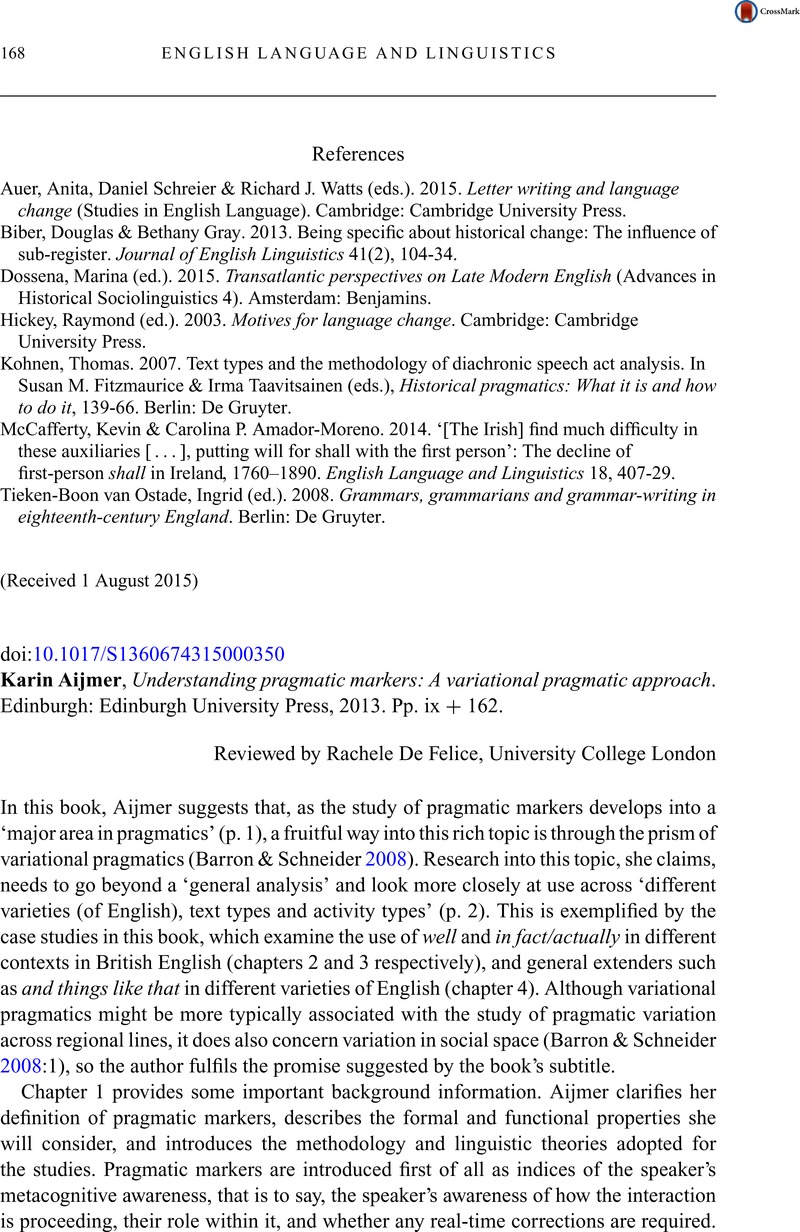Crossref Citations
This article has been cited by the following publications. This list is generated based on data provided by Crossref.
Ellederová, Eva
2022.
Information technology students’ involvement in in-class debates: Speech acts and modification of the illocutionary force.
Discourse and Interaction,
Vol. 15,
Issue. 2,
p.
28.




